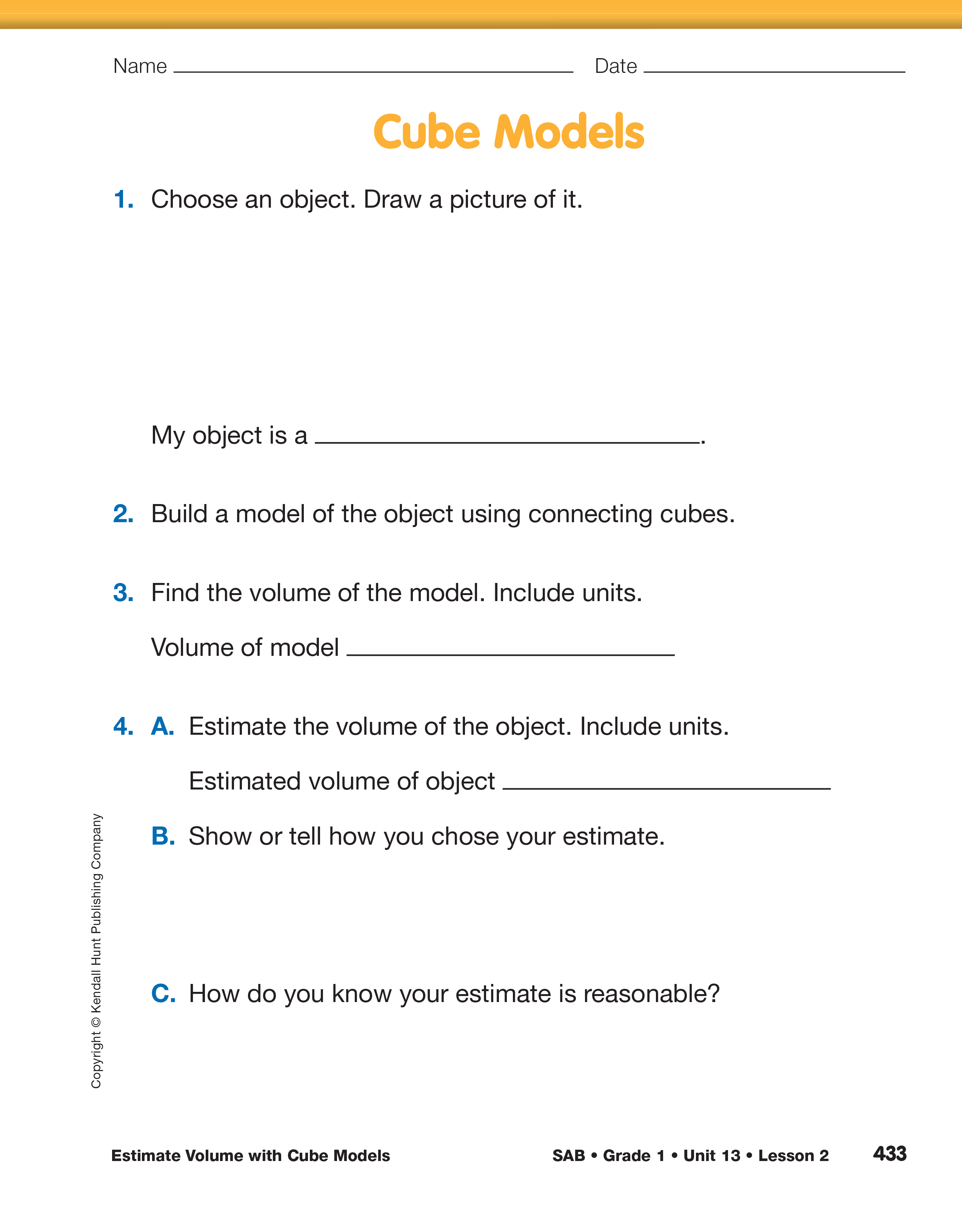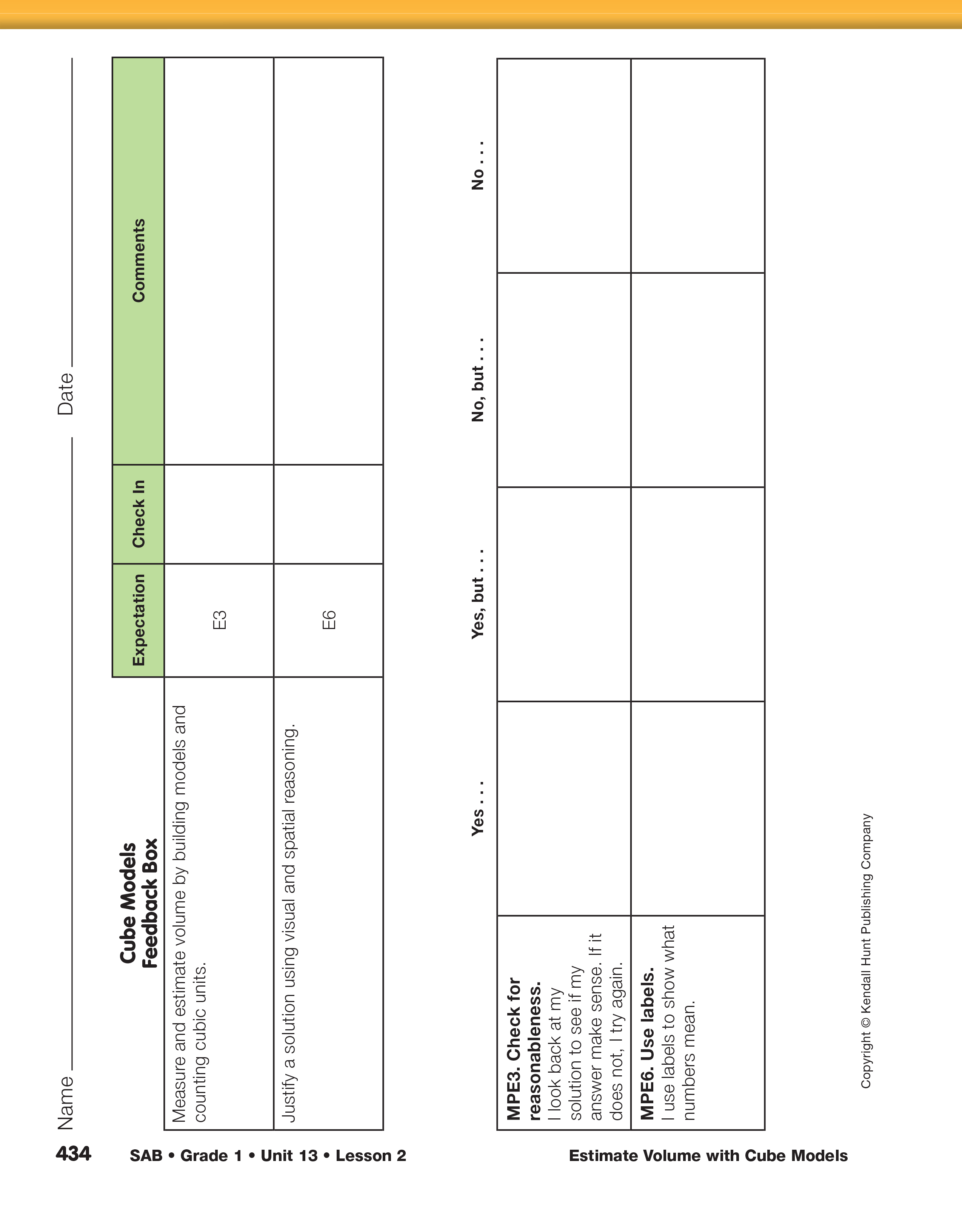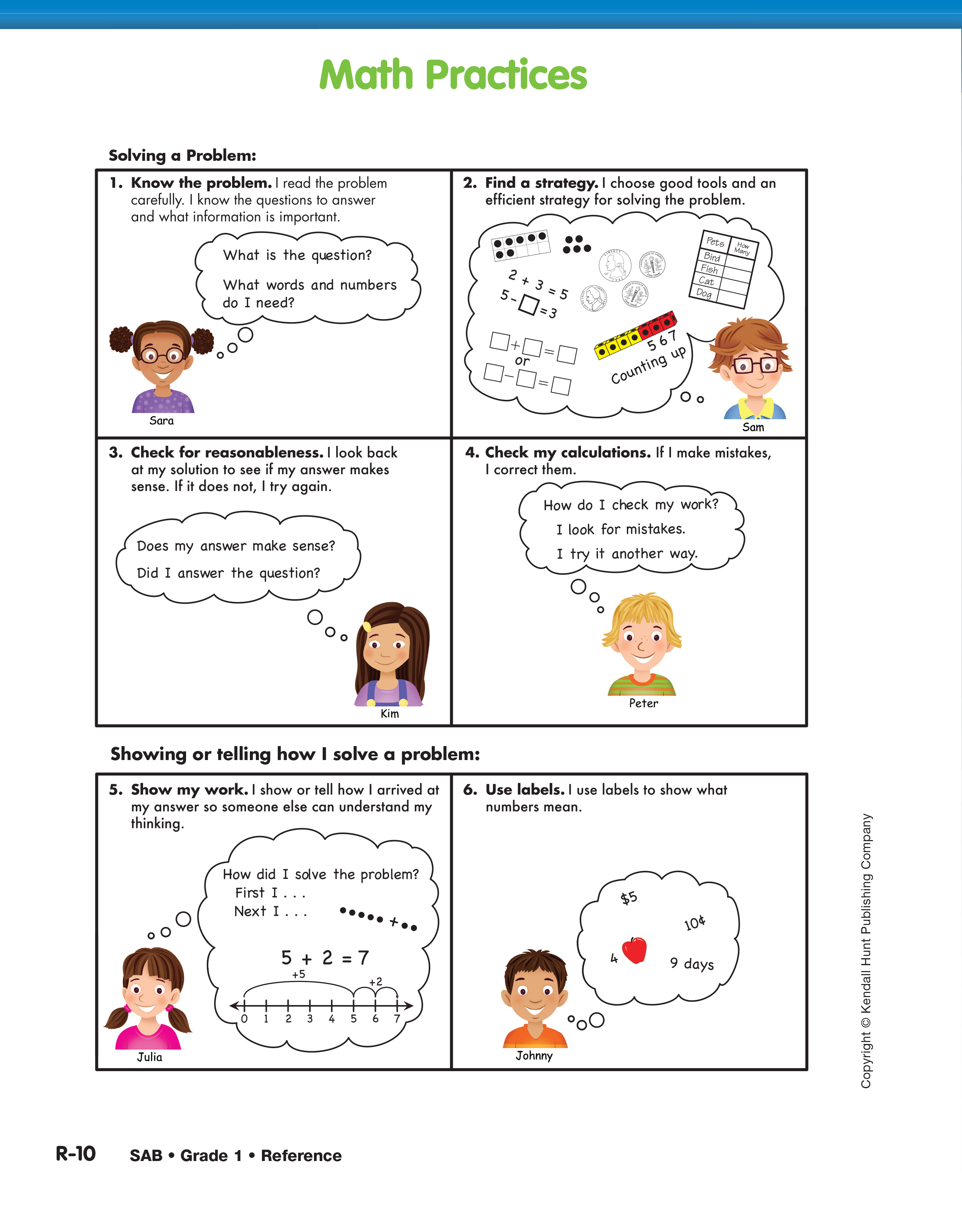Estimate Volume with Cube Models
Est. Class Sessions: 1–2Developing the Lesson
Build Cube Models. Set up a display of the classroom objects collected for this lesson. Provide opportunity for students to look at the items that are part of the display. After allowing for several minutes of observation, tell them they will work with their partner to build a model of one of the objects with connecting cubes, so they can estimate the volume of their object in cubic units. Remind students that the volume is the amount of space that an object takes up or how much it would take to fill it all the way up. Hold up one object and ask students to predict its volume in cubic units.
Ask:
Direct students to the Cube Models pages in the Student Activity Book. Have each student pair select one object from the collection of classroom objects. Once each pair of students has an object, ask students to look at the display of the Math Practices page. Tell students that as they work together to estimate the volume of their object they will focus on Math Practices 3 and 6.
Ask:
Read Questions 1–2 aloud to students, providing time for them to draw their picture and build their cube model. Remind them that their model should be as close to the actual size of the object as possible. After students finish their models, they count the numbers of cubes used to build it and record the volume of their model in Question 3.
Compare Cube Models. Ask each student to place their cube models side by side with the real object and compare them.
Ask them to consider whether the volume of their model is slightly greater than, slightly less than, or the same as the volume of the object using prompts similar to the following:
After students have considered the similarities and
differences of their model and the real object, ask
students to answer
Question 4 on the Cube Models
pages of the Student Activity Book. This question
asks students to use their cube model to estimate the
volume of the actual object and explain their reasoning
in doing so. Before students begin, review Math
Practice Expectations 3 and 6 on the display of the
Math Practices page. Remind students that as they
are working they should check to make sure their
estimate of their object’s volume is reasonable and
that they are labeling the volume to show what the
number means.
Ask:
Responses to the prompt above should include reasoning that explains how the similarities and differences between cube models and real objects were considered in evaluating the volume of the two. Comparing the volume of the cube model to that of the real object helps students understand the concept of estimating. Discussion of these comparisons will help students understand that not only the shape of the object but all dimensions should be considered to make a reasonable estimate and why estimates are not exact. See the Sample Dialog.

















